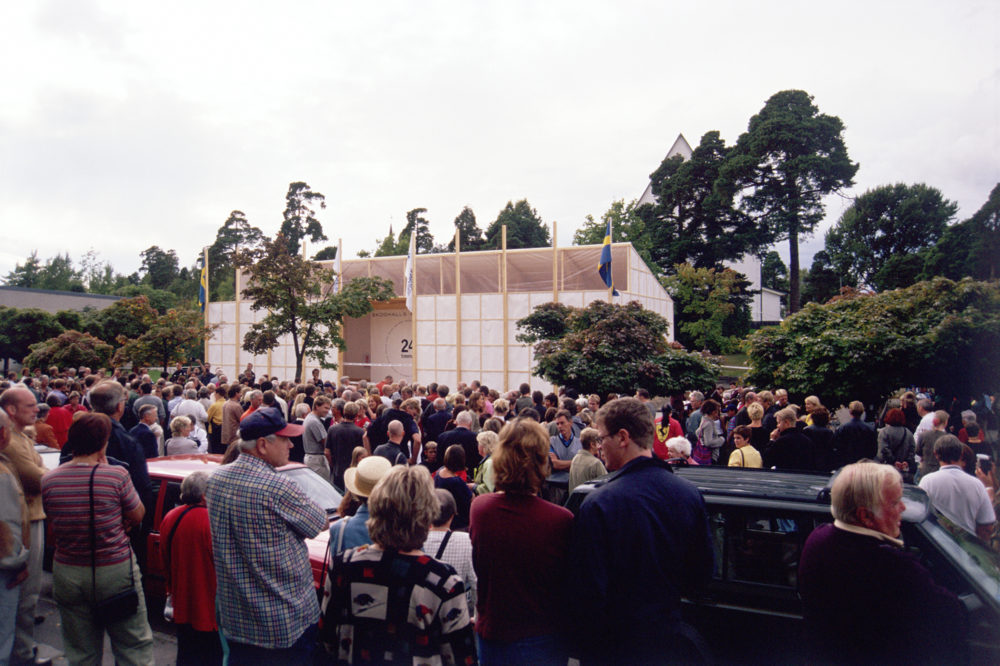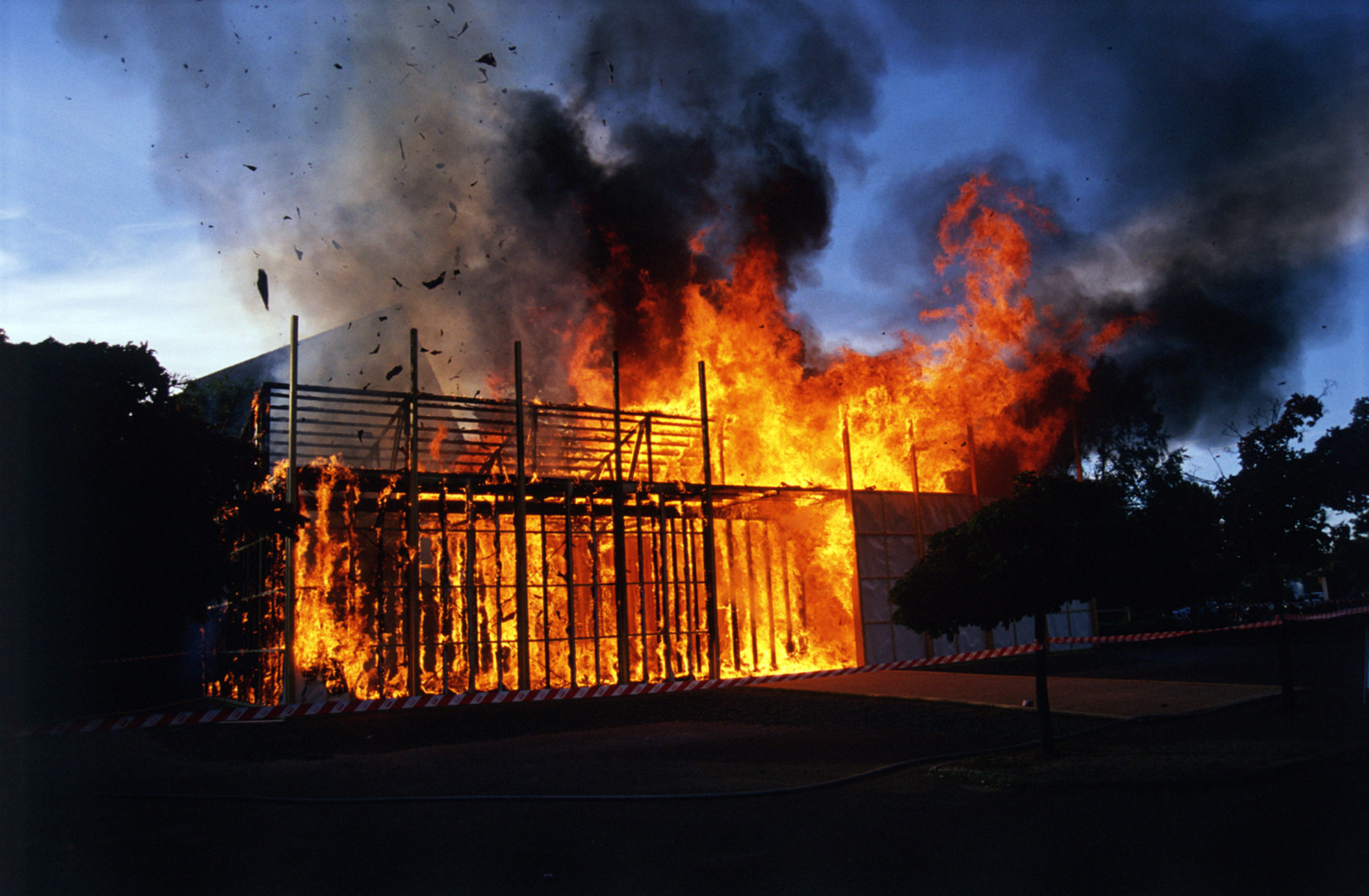In 2000, Chillean artist, architect and film maker Alfredo Jaar was commissioned by the town of Skoghall in south Sweden to propose a work of public art. Skoghall is a small town built to provide a workforce for a large pulp mill owned by a multinational corporation.
In response to the lack of cultural provision in the town, Jaar proposed to design and build a new gallery – the Skoghall Konsthall – using funds from Stora Enso, the multinational corporation that ran the paper mill, rather than the public money he had been offered. The corporation agreed and construction began.

The Konsthall was entirely constructed of paper and timber made in the paper mill. The inaugural exhibition was curated by Jaar and included works on paper by fifteen young Swedish artists. A key part of Jaar’s proposal was that the building should be officially opened by the mayor in the presence of the local community and, 24 hours later, be burnt down.
Local outrage ensued, with people arguing that such a cultural space was too important to the town to let go. Jaar was adamant, pointing out that the materials used to build the structure were equivalent to the amount of daily waste produced by the paper mill. His spectacular act of denial created momentum, giving local people an opportunity to raise their voices and state their desires.
I was shocked to discover that a community could exist for thirty years without any visible cultural or exhibition space. How do you represent the absence of this space for culture in an entire community? I found it hard to believe that people could live without the intellectual and critical stimulus that visual art can provide… It blew my mind. I sought a spectacular way to deal with this lack. …I wanted to offer a glimpse of what contemporary art is and what it can do in a community. Then by ‘disappearing’ it in such a spectacular way, I hoped to reveal its absence.1Seven years after the ceremonial burning, Jaar was invited back to design a permanent Skoghall Konsthall.
The dramatic image of a newly built structure in flames has retained its power over the last twenty years; the story has travelled far beyond this small Swedish town into the collective memory of thousands of people across the world. Skoghall Konsthall challenges the accepted norms of public art by demonstrating that the ‘fleeting moment might be more valuable than the permanent’ and that through the act of destruction, public art can become a catalyst for societal change.2
